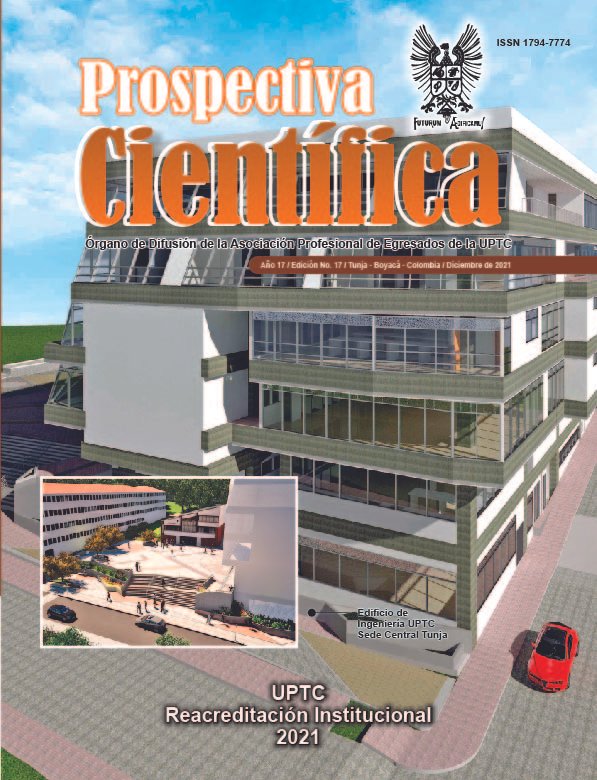ANÁLISIS DEL COBRO POR CONGESTIÓN EN BOGOTÁ DESDE UNA PERSPECTIVA DESAGREGADA
Palabras clave:
cargo por congestión, externalidades del transporte, modelos de elección discreta.Resumen
Aunque los beneficios del cobro por congestión han sido demostrados por la literatura económica, su implementación tiene baja aceptación en la práctica porque los usuarios de auto la entienden como una medida injusta. El presente artículo estima un modelo desagregado de demanda, basado en la teoría de la utilidad aleatoria, para identificar los factores que determinan el diseño de un mecanismo de tarificación desde la perspectiva de aceptación de los usuarios de auto. El modelo econométrico aporta información para la evaluación económica de la medida y permite modelar el comportamiento individual en diferentes escenarios de cobro por congestión.
Descargas
Referencias
Ardila, A. (1995). Control de la congestión vehicular en Bogotá con herramientas microeconómicas, Desarrollo y Sociedad, 35, 7.26.
Barth, M. & Boriboonsomsin, K. (2008). Real-World CO2 Impacts of Traffic Congestion, Transportation Research Record, Journal of the Transportation Research Board, 2058, Transportation Research Board, National Academy of Science.
Bascuñán, R. (2009). Preferencias declaradas en el análisis de la aceptabilidad de la tarificación vial para la ciudad de Santiago. Tesis de Magíster en Ciencias de la Ingeniería, Universidad Católica de Chile. 157 p.
Beevers, S. D. & Carslaw, D. C. (2005). The impact of congestion charging on vehicle emissions in London, Atmospheric Environment, 39, 1-5.
Ben-Akiva, M. & Lerman, S.R. (1985). Discrete Choice Analysis. Theory and Application to Travel Demand, Cambridge: The MIT Press. 412 p.
Bierlaire, M. (2003). BIOGEME: A free package for the estimation of discrete choice models, Proceedings of the 3rd Swiss Transportation Research Conference, Ascona, Switzerland.
Calfee, J. & Winston, C. (1998). The value of automobile travel time: Implications for congestion policy, Journal of Public Economics, 69, 83-102.
Caussade, S., Ortúzar, J. D., Rizzi, L. I. & Hensher, D. A. (2005). Assessing the influence of design dimensions on stated choice experiment estimates, Transportation Research Part B: Methodological, 39(7), 621-640.
Fernández, Y. & Olmedillas, B. (2002). Transporte, externalidades y coste social,Cuadernos de Economía, 25, 45-67.
Gaunt, M., Rye, T. & Allen, S. (2007). Public Acceptability of Road User Charging: The Case of Edinburgh and the 2005 Referendum, Transport Reviews, 27(1), 85-102.
Grote, M., Williams, I., Preston, J. & Kemp, S. (2016). Including congestion effects in urban road traffic CO2 emissions modelling: Do Local Government Authorities have the right options? Transportation Research Part D: Transport and Environment, 43, 95-106.
Kozac, N., Jones, P. & Whibley, D. (2005). Tools for road user charging (RUC) scheme option generation, Transport Policy, 12, 391-405.
Lancaster, K. J. (1966). A new approach to consumer theory, Journal of Political Economy, 14, 132-157.
Litman, T. & Burwell, D. (2006). Issues in sustainable transportation, International Journal of Global Environmental Issues, 6(4), 331-347.
Makarewicz, R. & Galuszka, M. (2011). Road traffic noise prediction based on speed-flow diagram, Applied Acoustics, 72(4), 190-195.
Manski, C. (1977). The structure of random utility models, Theory and Decision, 8, 229- 254.
Marchand, M. (1968). A note on optimal tolls in an imperfect environment, Econometrica, 36(3-4), 575-581.
Márquez, L. (2013). Disposición a pagar por reducir el tiempo de viaje en Tunja (Colombia): Comparación entre estudiantes y trabajadores con un modelo Logit mixto, Lecturas de Economía, 78, 45-72.
Márquez, L. (2016). La percepción de seguridad en la demanda de transporte de la integración bicicleta-metro en Bogotá, Colombia, Lecturas de Economía, 84, 143-177.
Márquez, L., Gallo, L. & Chacón, C. (2011). Influencia del costo de parqueo en el uso del auto en Bogotá, Ing. Univ. Bogotá (Colombia), 15(1), 105-124.
Márquez, L., García, D. E. & Guarín L. C. (2014). Funciones volumen-demora BPR y cónica en vías multicarriles de Bogotá, Colombia. rev.ing., 41, 30-39.
Márquez, L., Aldana, J. D. & Prieto, M. F. (2016). Acceptability of Implementing High Occupancy Vehicle Lanes on the North Highway in Bogota. Ing. Univ. Bogotá (Colombia), 20(1), 7-22.
McFadden, D. (1974). The measurement of urban travel demand, Journal of Public Economics, 3, 303-328.
Mohring, H. (1972). Optimization and Scale Economies in Urban Bus Transportation, American Economic Review, 591-604.
Ortúzar, J. D. & Román, C. (2003). El problema de modelación de demanda desde una perspectiva desagregada: el caso del transporte, Revista eure, 29(88), 149-171.
Ortúzar, J. D. & Willumsen, L. G. (2011). Modelling transport. 3a ed. Chichester: John Wiley & Sons, 499 p.
Pigou, A. C. (1912). The Economics of Welfare, London: Macmillan, xxxi + 493 p.
Thompson, I. & Bull, A. (2002). La congestión del tránsito urbano: causas y consecuencias económicas y sociales, Revista de La Cepal, 76, 109-121.
Safirova, E. (2002). Telecommuting, traffic congestion, and agglomeration: a general equilibrium model, Journal of Urban Economics, 52(1), 26-52.
Small, K. & Yan, J. (2001). The value of “value pricing” of roads: second-best pricing and product differentiation, Journal of Urban Economics, 49(2), 310-336.
Spiess, H. (1990). Conical Volume-Delay Functions, Transportation Science, 24(2), 153- 158.
Thurstone, L. (1927). A law of comparative judgement, Psichological Review, 34, 273- 286.
Train, K. (2003). Discrete Choice Methods with Simulation. Cambridge: University Press, 329 p.
Verhoef, E., Nijkamp, P. & Rietveld, P. (1996). Second-best congestion pricing: the case of an untolled alternative, Journal of Urban Economics, 40(3), 279-302.
Vickrey, A. (1969). Congestion theory and transport investment, American Economic Review, 59(2), 251-260.
Walters, A. (1961). The theory of measurement of private and social cost of highway congestion, Econometrica, 29(4), 676-699.
Wardrop, J. G. (1952). Some Theoretical Aspects of Road Traffic Research, Proceedings, Institution of Civil Engineers, II (1), 325-378.
Zhang, K., Batterman, S. & Dion, F. (2011). Vehicle emissions in congestion: Comparison of work zone, rush hour and free-flow conditions, Atmospheric Environment, 45, 1929- 1939.
Zwerina, K., Huber, J. & Kuhfeld, W. E. (2005). MR-2010E - A General Method for Constructing Efficient Choice Designs. SAS Institute. http://support.sas.com/techsup/ technote/mr2010e.pdf


